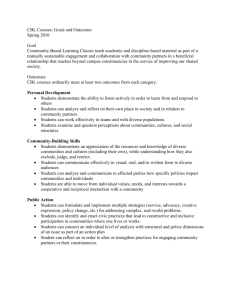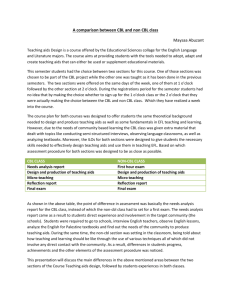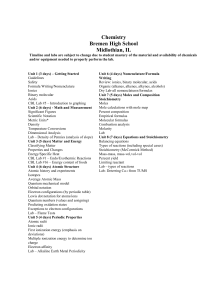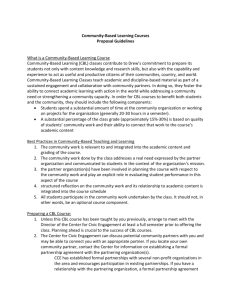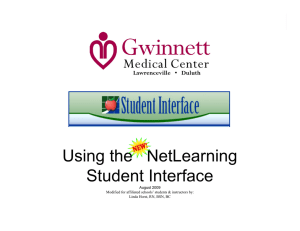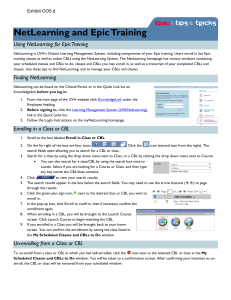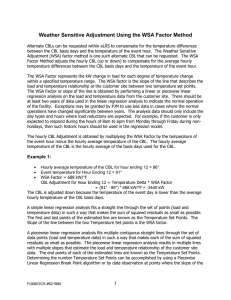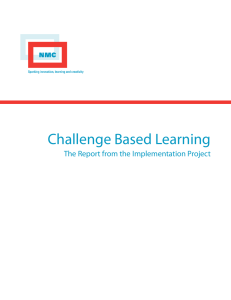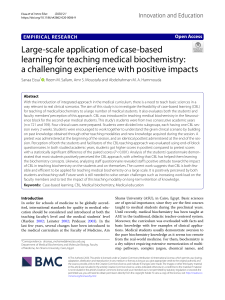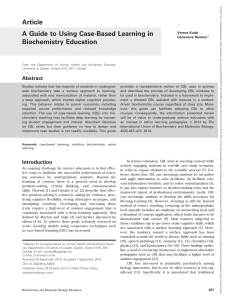Concept Based Learning December 11, 2013 Social Studies ERPD
advertisement
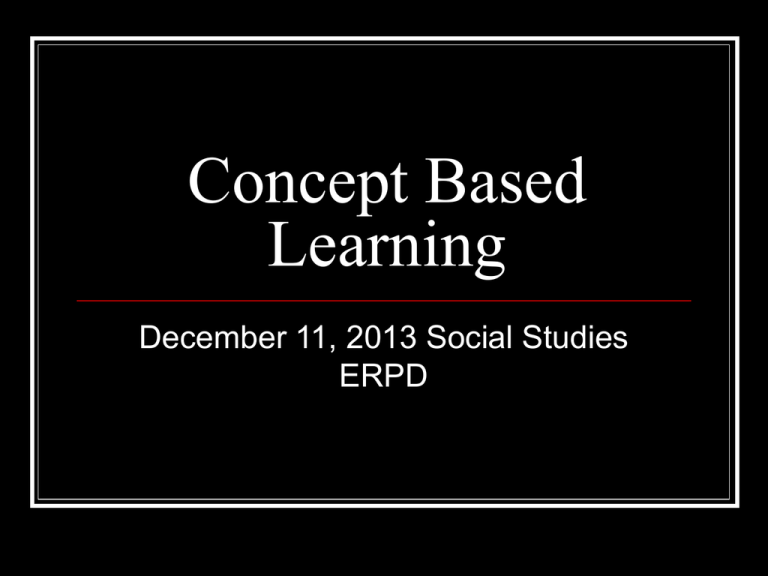
Concept Based Learning December 11, 2013 Social Studies ERPD Goals of this session We will… Generally understand what CBL is Generally know how to grasp CBL so to use it in our unit planning and pacing Begin to implement CBL into our own lessons / units we have with us today Know where to find other helpful resources to further understand CBL What is CBL? “Concept based learning is about big transferable ideas that transcend time, place, situation.” “Content just focuses on facts while concept focuses on making sense of those facts and the world around us.” “We can’t possibly teach everything that is important, but we can teach the big ideas…content can change, concepts stay the same.” “Information is useless unless you can do something with it.” What is CBL? What must be present to qualify a concept; a concept is… Timeless Universal Transferable Abstract and Broad (to various degrees) Examples show common attributes Can be represented by 1 or 2 words Why use CBL? Traditional Classroom: Teaching to facts and topics Teacher centered Little to no Inquiry Teaching uses no concepts or uses concepts as vocabulary words Conceptual Classroom: Teaching to “big ideas” Student Centered Teaching using concepts as part of relationships and transferrable ideas How to identify concepts; concept vs. fact With a group of people close to you, discuss the terms and determine whether they are or are not concepts. Nomads Hunters and Gatherers Revolution Pre-historic Civilization Community Environment Needs and Wants Migration System Movement Computer Age Civil War Agriculture Government Citizenship Agricultural Revolution Five Themes of Geography Students can make Generalizations At the successful conclusion of teaching a CBL or unit, students should be able to make generalizations which link concepts together demonstrating their proficiency Example: “War may alter the physical and human geography of a place” Common Question: What about content? Using The Concepts and the Standard, Create Some Generalizations On The Index Cards In Front Of You. 6.G.1.2 Explain the factors that influenced the movement of people, goods, and ideas and the effects of that movement on societies and regions over time (e.g., scarcity of resources, conquests, desire for wealth, disease and trade). Place Politics Resources Freedom Exchange Responsibilities Reform Regions Religion Change Trade Expansion Conquest Compromise Culture Reaction Scarcity Location Power Diversity Rights Revolution Community War Independent Work and Resources For the remainder of our session we will use any lessons we have and experiment with how to adapt them to CBL Resources to consult: The following link takes you to the site I used in this presentation, it is also what DPI used in the PD session I attended in October http://ssnces.ncdpi.wikispaces.net/2013+Social+Studies+F all+RESA+-+Region+6 This is a six minute YouTube presentation which explains more on what we’ve explored today http://www.youtube.com/watch?v=g8fKU9LZ2kw&safe=acti ve
